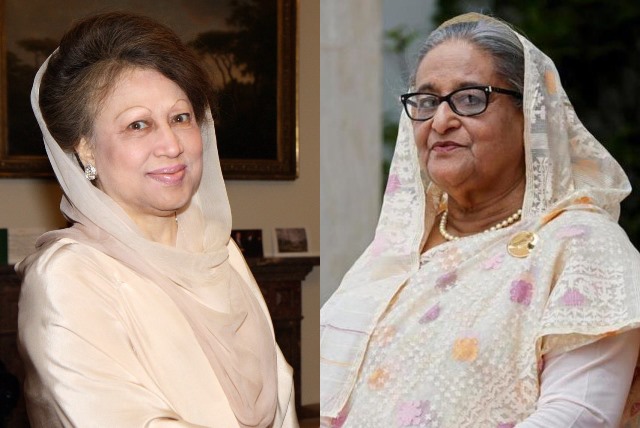
Trump: The Nightmare on Film Street
All pretence of friendship with India and its “great guy” prime minister is, to use a popular Bollywood term, benaqab, Hindustani for torn apart, as the leader of the most powerful nation strikes at the world’s largest filmmaker.
Mr Donald Trump has struck again, at India, yet not singling it out, and hurting it the most. There are no surprises, given his showbiz background and in any case, he had talked about it in May.
A massive 100% tariff — import duty or tax — on movies made “outside the US” comes as another major blow to India, which has been facing his wrath, with blips of bonhomie, for the past three months and more.
The Indian diaspora in the US spends around $100 million a year to watch Telugu, Hindi, Tamil, Malayalam, Punjabi, Bengali and other Indian language movies, according to the Producers Guild of India.
In his zeal to punish India, Trump has hit the space and beyond, as it is unclear how such a tariff on movies, which are software, would be implemented, given that modern film-making is mostly digital and done across countries, with much of the production work being online.
Shah Rukh Khan and Deepika Padukone’s Jawan, Prabhas-starrer Baahubali series, and Ranbir Kapoor-Tripti Dimri’s Animal are among the movies that did significant business in the US recently. Recent Indian movies that earned major revenues in the US, as per IMDb include Baahubali 2 at $22 million, followed by Kalki 2898AD, Pathaan, RRR, Pushpa 2, Jawan, and Animal, all grossing $15-19 million each.
But one impact could be on ticket prices if producers pass on the tax burden to consumers. The viewership is not confined to 5.4 million Indians alone. Traditionally, other South Asians also view Indian language movies, such as Pakistanis for Punjabi and Hindi, Bangladeshi for Bengali, or Lankan Tamils, besides locals who enjoy diverse films.
After what is widely seen as a personal pique at India not endorsing him for the Nobel Prize for Peace, it is tempting to say that Mr Trump is “jealous, simply jealous” to imitate Indian megastar Amitabh Bachchan in Cheeni Kum. Mr Trump is jealous because the USA, home to Hollywood, ranks fourth in global film production.
With over 2,500 films made annually, India firmly retains its position as the world’s top film producer. This is not new, but it raises a tempting question: If the global ranking is determined by geopolitics and geo-economics, how about ‘geo-cinematics’?
The ranking would then place India ahead of China, which made 800 films, a third of India’s output, and overtakes Japan’s 676 films. And, the mighty United States is in fourth place with a poor 510. Indeed, it dropped from second place in 2022.
Hollywood, Trump had lamented in May, “is dying”.
To his chagrin, perhaps, multipolarity is at work. Forget India for a moment, for the first time in cinematic history, China has overtaken both Japan and the United States in terms of film production.
The situation is contrasting. The Chinese score thanks to a surge during 2023-24, but despite its economy experiencing a slowdown, footfalls in cinema theatres are down by eight per cent because of the domestic money crunch.
Globally, however, the good news is that people, stressed by climate change, growing economic disparities, and multiple conflicts raging around them, are flocking to cinema halls and multiplexes that offer a few hours’ comfort. The new data shows that global box office revenues are also projected to rise in 2025, surpassing USD 34 billion, driven in part by this production rebound.
Another good news is that global film production has picked up after the COVID-19 pandemic. Closed film studios, a ban on outdoor film shooting and people locked up in their offices are a thing of the forgettable past, hopefully, never to return.
Looking at 2026 and 2027, film release slates appear as robust as they were before the COVID-19 pandemic.
The production is expected to have grown significantly again in 2024, according to figures processed by David Hancock of Omdia, a US-based database, and Claire Rousseau, Jeff Slee and Sacha Wunsch-Vincent of the World Intellectual Property Organisation (WIPO). Readied this month, it is scheduled for release in April next year.
Innovations driven by technological advancements have helped. With China leading the pack, animated films continue to play a key role in box office growth, the data shows. New marketing and release strategies are also emerging with strong potential to boost cinema revenues.
ALSO READ: A Cinematic Rid – From Celluloid To Digital
What about Europe, especially France, where it all began, at the end of the 19th century? Spain retains fifth place globally, leading the European pack. The number of French films produced annually has remained consistent, with 231 films in 2024, matching the pre-pandemic average. Total investment in French cinema in 2024 hit €1.44 billion, a record high, driven by both domestic and foreign contributions. The leaders are the United Kingdom, Germany, the United States (as minority co-producer), and Sweden.
In 2024, the UK’s film and high-end TV production sector saw total investment rebound to approximately £5.6 billion, a 31% increase from 2023 but still below the 2022 peak, with films accounting for £2.1 billion. The actual number of films dipped from 207 in 2023 to 191.
But in comparison with what is happening elsewhere, Europe has taken the back seat. While holding its own, a commentary in The Guardian, London, indicates that the continent is basking in its famed international film festivals at Locarno, Venice, Karlovy Vary and Cannes. Yet, Iceland retains the top position in per capita film production, followed by Estonia, Switzerland, Latvia and Croatia.
In Africa, Nigeria remains the leader. Egypt nearly doubled its production of national feature films, adding 19 more films, while Kenya (+77%) and Morocco (+79%) also saw notable increases.
Globally, economic might seems to matter less. Movies are where eyeballs are, mainly in Asia and Latin America. India and China are among the nine middle-income economies represented among the top 20 global film producers. The others are Mexico, Argentina, Brazil, Türkiye, the Philippines, Iran and Indonesia as per films produced in 2023. Mexico continues its strong performance, ranking 8th globally and securing a spot in the top 10 for the third consecutive year.
To return to India, although its film production, in 20 different languages, hovered below 2,000 in the pre-COVID era, it was still the highest. The surge has come with the advent of the OTT (over-the-top) platforms that provide home entertainment, and with fast urbanisation, the growth of multiplex cinema halls.
But India’s film production is not “Breaking News”. Earning-wise, the Indian film industry’s annual revenue is in the range of ₹15,000–18,000 crore (about USD 1.8–2.2 billion) from theatrical box office alone (2023 figures). This is smaller than Hollywood’s USD 11–12 billion and China’s film market (USD 7–8 billion).
The trend of money invested and recovered remains unchanged. A small percentage of films earn the bulk of the revenue. Industry estimates say 10–15% of films are profitable. Another 20–25% recovery costs but partially. The majority (60%+) fail to recover investments.
Big-budget Hindi, Telugu, Tamil, and sometimes Kannada films dominate the box office and streaming rights sales. Hindi films earn 33% of total box office revenue. Telugu+Tamil films: together 45%. These industries often lead in blockbuster hits.
Other languages (Kannada, Malayalam, Marathi, Bengali, Punjabi, etc.): 20%, though a few Malayalam and Kannada films recently punched above their weight. The bright side is that technology enables the release of a film in multiple languages. A multilingual India, with language raising emotional issues in the political and cultural arena, is integrating film watchers.
Domestic Box Office remains the main source of earnings, which is by far limited compared to the huge number of releases. Overseas Box Office: important for Hindi, Telugu, Tamil films (US, Gulf, UK are big markets).
India has a marked presence on Digital Rights or OTT, thanks to a huge domestic market and the diasporas. Revenue is rising sharply—sometimes OTT deals alone cover the production cost of mid-size films. Satellite TV & Music Rights: smaller but steady revenue streams.
If the total Indian box office is Rs ₹12,000–13,000 crore in a given year, that averages ₹5–6 crore per film—but this number is highly misleading since only the top films earn hundreds or thousands of crores, while most earn little or nothing.
In sum, India makes the most films, but only a handful succeed commercially. The industry is high-volume, low-average-revenue, sustained by a few blockbuster hits, strong regional industries, and growing digital rights sales. Call it ‘freedom’ if you must – the old laissez-faire continues.



